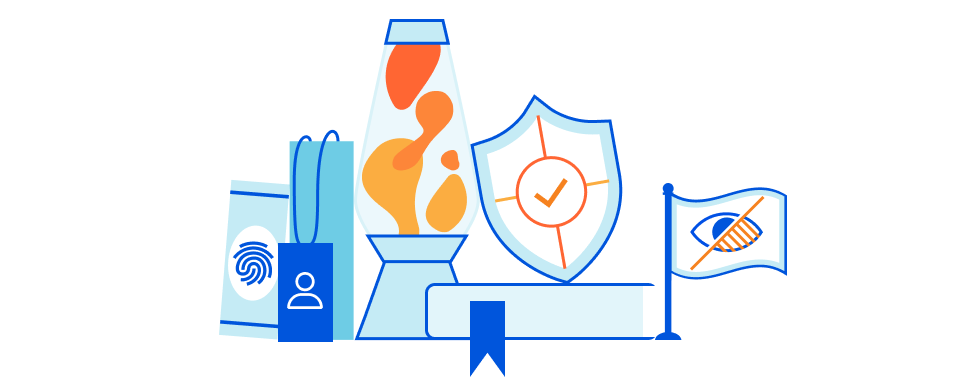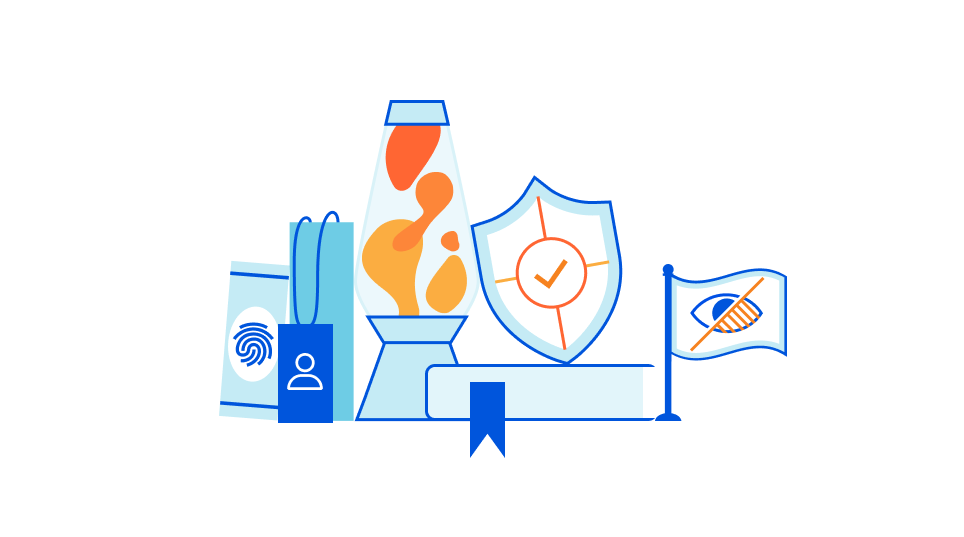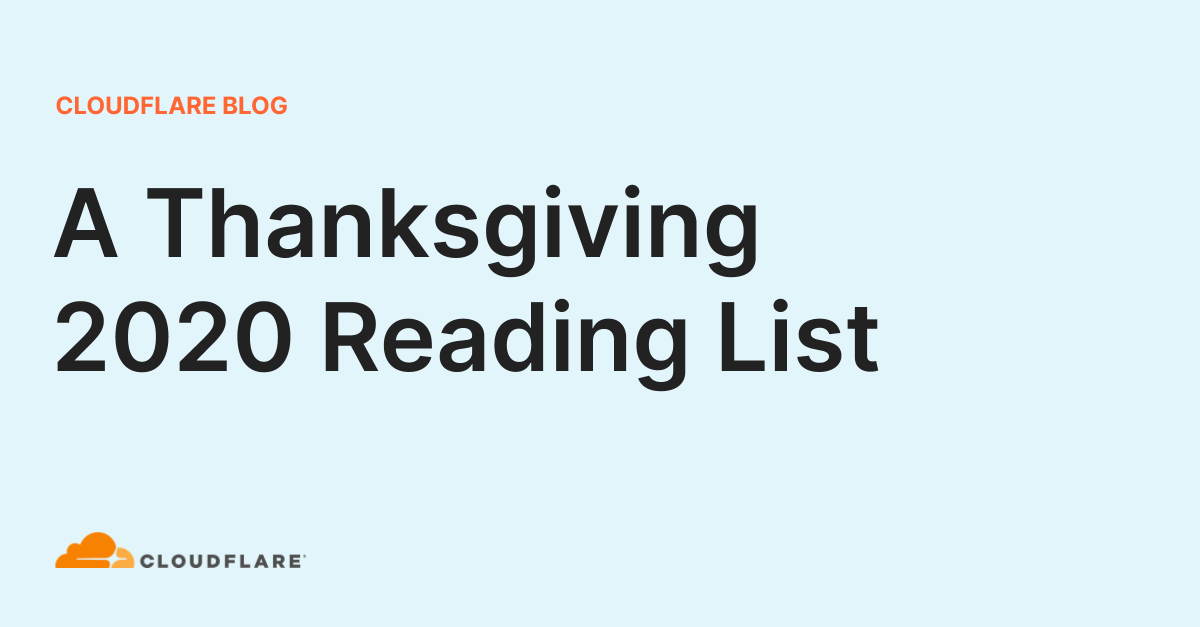Post Syndicated from Val Vesa original https://blog.cloudflare.com/privacy-and-compliance-reading-list/


Privacy matters. Privacy and Compliance are at the heart of Cloudflare’s products and solutions. We are committed to providing built-in data protection and privacy throughout our global network and for every product in our portfolio. This is why we have dedicated a whole week to highlight important aspects of how we are working to make sure privacy will stay at the core of all we do as a business.
In case you missed any of the blog posts this week addressing the topics of Privacy and Compliance, you’ll find a summary below.
Welcome to Privacy & Compliance Week: Reflecting Values at Cloudflare’s Core
We started the week with this introduction by Matthew Prince. The blog post summarizes the early decisions that the founding team made to make sure customer data is kept private, that we do not sell or rent this data to third parties, and why trust is the foundation of our business. > Read the full blog post.
Introducing the Cloudflare Data Localization Suite
Cloudflare’s network is private and compliant by design. Preserving end-user privacy is core to our mission of helping to build a better Internet; we’ve never sold personal data about customers or end-users of our network. We comply with laws like GDPR and maintain certifications such as ISO-27001. In a blog post by John Graham-Cumming, we announced the Data Localization Suite, which helps businesses get the performance and security benefits of Cloudflare’s global network while making it easy to set rules and controls at the edge about where their data is stored and protected. The Data Localization Suite is available now as an add-on for Enterprise customers. > Read the full blog post.
Privacy needs to be built into the Internet
John also reflected upon three phases of the evolution of the Internet: from its invention to the mid-1990s the race was on for expansion and connectivity. Then, as more devices and networks became interconnected, the focus shifted with the introduction of SSL in 1994 to a second phase where security became paramount. We’re now in the full swing of phase 3, where privacy is becoming more and more important than ever. > Read the full blog post.
Helping build the next generation of privacy-preserving protocols
The Internet is growing in terms of its capacity and the number of people using it and evolving in terms of its design and functionality. As a player in the Internet ecosystem, Cloudflare has a responsibility to help the Internet grow in a way that respects and provides value for its users. In this blog post, Nick Sullivan summarizes several announcements on improving Internet protocols with respect to something important to our customers and Internet users worldwide: privacy. These initiatives are focussed around: fixing one of the last information leaks in HTTPS through Encrypted Client Hello (ECH), which supersedes Encrypted SNI; making DNS even more private by supporting Oblivious DNS-over-HTTPS (ODoH); developing a superior protocol for password authentication, OPAQUE, that makes password breaches less likely to occur. > Read the full blog post.
OPAQUE: The Best Passwords Never Leave your Device
Passwords are a problem. They are a problem for reasons that are familiar to most readers. For us at Cloudflare, the problem lies much deeper and broader. Most readers will immediately acknowledge that passwords are hard to remember and manage, especially as password requirements grow increasingly complex. Luckily there are great software packages and browser add-ons to help manage passwords. Unfortunately, the greater underlying problem is beyond the reaches of software to solve. Today’s deep-dive blog post by Tatiana Bradley, into OPAQUE, is one possible answer. OPAQUE is one among many examples of systems that enable a password to be useful without it ever leaving your possession. No one likes passwords, but as long they’re in use, at least we can ensure they are never given away. > Read the full blog post.
Good-bye ESNI, hello ECH!
In this post Christopher Patton dives into Encrypted Client Hello (ECH), a new extension for TLS that promises to significantly enhance the privacy of this critical Internet protocol. Today, a number of privacy-sensitive parameters of the TLS connection are negotiated in the clear. This leaves a trove of metadata available to network observers, including the endpoints’ identities, how they use the connection, and so on. > Read the full blog post.
Improving DNS Privacy with Oblivious DoH in 1.1.1.1
Tanya Verma and Sudheesh Singanamalla wrote this blog post for our announcement of support for a new proposed DNS standard — co-authored by engineers from Cloudflare, Apple, and Fastly — that separates IP addresses from queries, so that no single entity can see both at the same time. Even better, we’ve made source code available, so anyone can try out ODoH, or run their own ODoH service! > Read the full blog post.
Deprecating the __cfduid cookie
Cloudflare never tracks end-users across sites or sells their personal data. However, we didn’t want there to be any questions about our cookie use, and we don’t want any customer to think they need a cookie banner because of what we do. Therefore we’ve announced that Cloudflare is deprecating the __cfduid cookie. Starting on 10 May 2021, we will stop adding a “Set-Cookie” header on all HTTP responses. The last __cfduid cookies will expire 30 days after that. So why did we use the __cfduid cookie before, and why can we remove it now? Read the full blog post by Sergi Isasi to find out.
Cloudflare’s privacy-first Web Analytics is now available for everyone
In September, we announced that we’re building a new, free Web Analytics product for the whole web. In this blog post by Jon Levine, we’re announcing that anyone can now sign up to use our new Web Analytics — even without changing your DNS settings. In other words, Cloudflare Web Analytics can now be deployed by adding an HTML snippet (in the same way many other popular web analytics tools are) making it easier than ever to use privacy-first tools to understand visitor behavior.
Announcing Workplace Records for Cloudflare for Teams
As businesses worldwide have shifted to remote work, many employees have been working from “home” — wherever that may be. Some employees have taken this opportunity to venture further from where they usually are, sometimes crossing state and national borders. Businesses worldwide pay employment taxes based on where their employees do work. For most businesses and in normal times, where employees do work has been relatively easy to determine: it’s where they come into the office. But 2020 has made everything more complicated, even taxes. In this blog post by Matthew Prince and Sam Rhea, we’re announcing the beta of a new feature for Cloudflare for Teams to help solve this problem: Workplace Records. Cloudflare for Teams uses Access and Gateway logs to provide the state and country from which employees are working. Workplace Records can be used to help finance, legal, and HR departments determine where payroll taxes are due and provide a record to defend those decisions.
Securing the post-quantum world
Quantum computing will change the face of Internet security forever — particularly in the realm of cryptography, which is the way communications and information are secured across channels like the Internet. Cryptography is critical to almost every aspect of modern life, from banking to cellular communications to connected refrigerators and systems that keep subways running on time. This ultra-powerful, highly sophisticated new generation of computing has the potential to unravel decades of work that have been put into developing the cryptographic algorithms and standards we use today. When will a quantum computer be built that is powerful enough to break all modern cryptography? By some estimates, it may take 10 to 15 years. This makes deploying post-quantum cryptography as soon as possible a pressing privacy concern. Cloudflare is taking steps to accelerate this transition. Read the full blog post by Nick Sullivan to find out more.
How to Build a Global Network that Complies with Local Law
Governments around the world have long had an interest in getting access to online records. Sometimes law enforcement is looking for evidence relevant to criminal investigations. Sometimes intelligence agencies are looking to learn more about what foreign governments or actors are doing. And online service providers of all kinds often serve as an access point for those electronic records.
For service providers like Cloudflare, though, those requests can be fraught. The work that law enforcement and other government authorities do is important. At the same time, the data that law enforcement and other government authorities are seeking does not belong to us. By using our services, our customers have put us in a position of trust over that data. Maintaining that trust is fundamental to our business and our values. Alissa Stark details in her blog post how Cloudflare works to ensure compliance with laws like GDPR, particularly in the face of legal orders that might put us in the difficult position of being required to violate it and that requires involving the courts.
Encrypting your WAF Payloads with Hybrid Public Key Encryption (HPKE)
The Cloudflare Web Application Firewall (WAF) blocks more than 72B malicious requests per day from reaching our customers’ applications. Typically, our users can easily confirm these requests were not legitimate by checking the URL, the query parameters, or other metadata that Cloudflare provides as part of the security event log in the dashboard. Request headers may contain cookies and POST payloads may contain username and password pairs submitted during a login attempt among other sensitive data.
We recognize that providing clear visibility in any security event is a core feature of a firewall, as this allows users to better fine-tune their rules. To accomplish this, while ensuring end-user privacy, we built encrypted WAF matched payload logging. This feature will log only the specific component of the request the WAF has deemed malicious — and it is encrypted using a customer-provided key to ensure that no Cloudflare employee can examine the data. Michael Tremante goes over this in full detail, explaining how only application owners who also have access to the Cloudflare dashboard as Super Administrators will be able to configure encrypted matched payload logging.
Supporting Jurisdictional Restrictions for Durable Objects
Durable Objects, currently in limited beta, already make it easy for customers to manage state on Cloudflare Workers without worrying about provisioning infrastructure. Greg McKeon announces in this blog post the upcoming launch of Jurisdictional Restrictions for Durable Objects, which ensure that a Durable Object only stores and processes data in a given geographical region. Jurisdictional Restrictions make it easy for developers to build serverless, stateful applications that not only comply with today’s regulations but can handle new and updated policies as new regulations are added. Head over to the blog post to read more and also request an invite to the beta.
I want my Cloudflare TV
We have also had a full week of CloudflareTV segments focussed on privacy and compliance and you can get the full list and more details on our dedicated Privacy Week page.
As always, we welcome your feedback and comments and we stay committed to putting the privacy and safety of your data at the core of everything we do.
